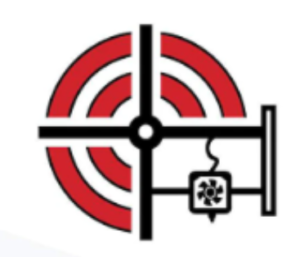Founded in 2016 by Harshil Goel, Dyndrite has been clear in its mission from the start: namely, “to fundamentally change how geometry is created, transformed, and transmitted on a computer.”
Harshil has always been an outspoken critic of the industry-wide use of STL file formats and has described STL as being ‘pathological’ to fix, and stated that the format itself is one of the key hurdles preventing additive manufacturing (AM) from being a production-grade process. However, Harshil, with degrees in mathematics and engineering from the University of California, Berkeley, has driven the development of new, indeed revolutionary approaches to creating toolpaths in AM that, over time, are having an impact both in terms of speed and the quality of metal 3D printed parts.

Dyndrite’s LPBF Pro. Image courtesy of Dyndrite.
The company’s first main iteration of its end-user software, LPBF Pro, was released in November 2023. Built on the Dyndrite Accelerated Computation Engine (ACE), this multi-threaded, GPU-accelerated software delivers proven performance improvements, Python automation, and an accessible development environment. It utilizes native CAD data in addition to polygonal meshes, and powerful algorithms drive the automated creation and recording of advanced print parameter sets that account for various layer heights, cantilevers, channels, thin walls, and other factors, as well as surface roughness requirements. These strategies ensure material homogeneity, enable a higher degree of repeatability, quality, and productivity not just from part to part, but from machine to machine. Dyndrite’s multi-optic toolpath optimization tools are enabling a number of Nikon SLM NXG users to push the limits of productivity without sacrificing quality on the machine.
However, change takes time, and moving the industry away from the deeply ingrained use of STL files is a slow process. Nevertheless, it is now starting to gain momentum, as evidenced by the fact that LPBF Pro now natively supports metal printing by Aconity3D, Additive Industries, EOS, Renishaw, Nikon SLM Solutions, and Xact Metal. A 2022 agreement with Sigma Additive Solutions resulted in the Dyndrite Application Developer’s Kit (ADK) being utilized for Sigma’s CAM, materials and process development, toolpath creation, and the resulting in-process quality data and analytics. In October of 2023, Divergent Technologies acquired all the software and IP from Sigma.
In July 2025, Dyndrite and Ursa Major, an aerospace and defense manufacturing company, announced a multi-year deal to utilize LPBF Pro for AM materials and process development, part qualification, and serial production of high-performance rocket propulsion systems.

Draper rocket engine. Image courtesy of Ursa Major
Looking at this history (and these are just highlights), Dyndrite is slowly and firmly pulling off a quiet strategic revolution in the metal AM industry, with published results and metrics now available, such as the research by Equispheres, Aconity3D and Dyndrite which successfully produced production-grade metal AM parts 7-9x faster, at 80% lower costs, while maintaining a quality surface finish.
Of course, when I say ‘quiet’ I don’t mean Harshil himself, who is probably one of the more outspoken people in the industry – but in a good way. When asked about the Ursa Major deal, Harshil explains: “During testing, our software allowed Ursa Major to successfully build parts that it couldn’t previously.” In addition, the company’s users were able to develop and test full parameter sets within 4-6 weeks, resulting in better porosity, and could ship them to the machines almost immediately.
“They did a number of previously impossible things in days … It definitely turned the heads of the people with intimate knowledge of what was accomplished. To learn more, you’ll need to come to ASTM’s ICAM. We have something special planned for the talks and our workshop,” said Harshil.
What about this new Alliance, AAAME?
Another announcement in July 2025 concerned the launch of the Alliance for the American Additive Manufacturing Ecosystem (AAAME) in collaboration with Ursa Major, Dyndrite, and other partners, including EOS and nLight.
The Alliance is a working group looking to support existing organizations within the AM industry and, when possible, jointly advocate for issues unique to its membership.
AAAME is excited to engage industry partners across the American Defense Industrial Base to identify and highlight issues that broadly affect organizations across the AM industry. Ultimately, AAAME is constructed to facilitate the advanced software-based qualification for the rapid deployment of additively manufactured systems.
According to Harshil, this is a major step forward in the push for faster, less expensive qualification of AM machines, materials, and processes for defense manufacturing.
“For Dyndrite, it’s been great to work alongside Ursa Major, who is showing everyone what is possible for reducing the cost of qualification, doing less testing, faster, because of heightened confidence in the process workflow through better software and analytical outcomes.”
According to Harshil, this marks a significant advancement in accelerating and lowering the cost of qualifying AM machines, materials, and processes for defense manufacturing.
“Our licensing partnership with Ursa Major is a great example of how, as an alliance, we’re setting the standard, demonstrating how better software and analytics can increase confidence in process workflows, reduce testing requirements, and speed up qualification, all while lowering costs.”
Qualification is a specific challenge for all, and Harshil calls the steep cost of it “The Qualification Moat,” but to do this, it needs the industry to adopt modern, mathematics-based methods.
“We all know we need to get rid of the proprietary BS involved in qualification for the defense Industrial base,” says Harshil, “And we need to level-set as an industry on what is considered proprietary.”
So I’m Sure You Have Views on the Use of AI in AM?
“People who declare that AI in AM is the next coming are the type of people who invested in Desktop Metal and continue to manage to fail upwards,” said Harshil. “AI is not going to ‘save’ additive.”
He points out that AI is a very useful accelerator of certain processes – especially in support, translation, and spotting trends. However, it’s a “tool for related activities,” and is going to “require a lot more thought.”
For readers who are interested in learning more, Dyndrite is working with a variety of parties, including Ursa Major, to give at least five technical talks, one panel, and one educational workshop at ICAM 2025.
Subscribe to Our Email Newsletter
Stay up-to-date on all the latest news from the 3D printing industry and receive information and offers from third party vendors.




